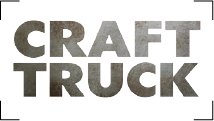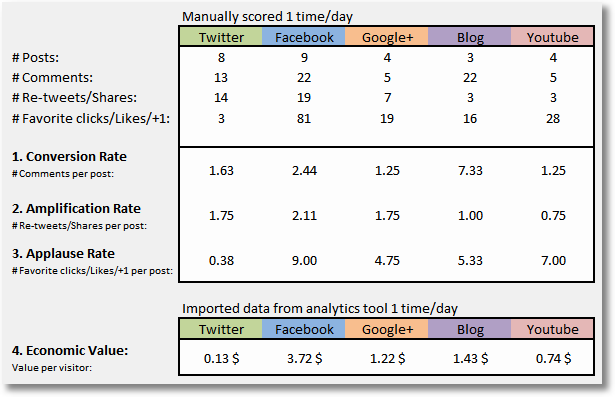1. What is Your Goal?
Before jumping onto Twitter specifically for the benefit of promoting your next film (or film company), understand what your goals are. Are you actually there to promote your upcoming film? Are you there for other social reasons? Be specific about what your goals are.
The answers – to promote your own film – may seem obvious – but it’s not the right answer. Because if that’s the goal, odds are that people won’t want to connect with you. It might be better to think of your goals in terms of values, ideas, content around certain subjects. If the goal is, I want create content around autism because I’ve got an indie drama about that subject, then perhaps create a place for people to connect around that subject.
Your goals need to tie into your content strategy, the elements that you will be creating and your unique value add. All described more below.
Start with asking yourself this question. And then read the rest of this post with that in mind.
2. Have a Content Strategy
What are you planning to put on Twitter? Will you be talking about what you had for breakfast? Or perhaps the latest news? Your “brand” be it yourself as a filmmaker or the film you are specifically trying to promote, is an amalgamation of everything you post online.
One tweet here or there, out of context, does not a brand make. It’s about the totality of what you put out. That’s how people will think about your brand. So take the time to figure out what your content strategy will be.
If you are planning on putting out film related news, how will you be different than other news aggregators? You probably can’t compete with that anyway; but, maybe you can give things your own unique spin.
If you film is about a specific subject matter, galvanize your audience around that subject and create a content strategy that speaks to that issue, or theme.
3. Be Creative
Twitter is a place where boring goes to die. There is too much coming too fast. Part of your content strategy has to incorporate ways to grab peoples attention. This may go without saying… but it’s worth the time and energy into coming up with great content. Great content gets shared. ReTweeted. Favorited.
4. Be Analytical
Do you actually track your analytics? If you aren’t, how will you know how you are doing? If you are posting into the wind, without tracking, then you will have no way to know if you are connecting with your audience. Take the time to track your Converstion Rate, Applause Rate & Amplification Rate. Here’s a chart from a guy you should be reading
5. Twitter is not a distribution platform
Most people use Twitter as a distribution platform instead of using it to create native content. If that is all that’s ever done then you likely won’t see results. Twitter is a content platform. It’s not a distribution platform. So, if you are constantly saying the equivalent of “buy me”, then you’re going to have problems.
However, if you consistently deliver content that is valuable and interesting to your audience, THEN, when it comes time to ask for the “buy”, your audience will follow along. But you have to build your brand, your audience, and its trust.
Take the time to create content that is exciting, engaging, and most importantly native to the platform.
6. How Twitter Can Impact Your Casting?
This one comes via John Suits at New Artists Alliance in a recent podcast that we did.
When we’re casting actors, we look and see how many Twitter followers they have. That’s one component of many that we use in measuring and establishing the value of an actor.- John Suits
The take away here isn’t necessarily that Twitter is the definitive guide on the value of an actor, but that we now need to have a 360 approach to casting. As we’ve come to learn in our Business of Film podcast, casting is largely subjective. Value to one person, or sales company, does not necessarily translate to another.
As the producer or filmmaker, there is a certain subjectivity in the process that you have to wade through. Social metrics can help you make that determination. As John says, if an actor has 1 million followers, in today’s market, that means something.
7. Understand the Impact of Twitter During Festivals
Again, from our friend John Suits, here’s what he had to say about Twitter and festivals.
Everybody at the festivals are listening to the Twitter feed to decide whether to see a movie, or not, or whether a movie is a hit. So, right after your movie is done, you immediately know what the response was. And depending on what those people say, it largely decides the life (or death) of your film at the festival. Even Sales Agents, I imagine, are looking at Twitter to see how the audience responded and if they wanted to buy the movie.- John Suits
Listen to the 1 min excerpt.
It’s just so interesting and the first time that we’ve ever heard this said before here at Craft Truck. But, the truth is, that when you hear this, you go “yah, that makes sense.” It’s so intuitive and yet, we may not think about it.
This isn’t something that is necessarily actionable IF you haven’t done anything about it before the festival. But, if you’ve planted a lot of Twitter seeds for the year before your film comes out and create an audience that wants to engage and see your film where you anticipate the film to be premiering in, you may be able actually create an atmosphere that works for you. Takes work. See #9.
8. Be Consistent
This is a biggie. Audiences will disappear fast. You have to have a consistent strategy. This may not mean daily… but, it kinda does. There’s just too much going on. If you want people to pay attention, you have to be in front of them all the time.
BUT, and this is the big but, you aren’t there yelling “buy me” (metaphorically speaking). Remember, you have to be creating consistent, creative and engaging content that is native to the platform. If you do that, you will see magnificent success, to steal a term from Mr. Avinash Kaushik, in your Twitter efforts.
9. Find Tastemakers
This is about geography in specific regions. You want to find the tastemakers in the geographies that will impact your film. If you are out there – in the Twitterverse – tweeting away and you audience is in another country, that may not be all that helpful.
You have to find the tastemakers in your area and engage with them. Directly. This will take work. This will take time. These are the people that will help you spread the work in the local regions where you hope your film will be playing.
If you do that, then you’ll be creating a geographic specific audience that can help you. Obviously, this is but a small part of your overall strategy, but it’s an important part. Because at the end of the day, you likely aren’t doing this “just for fun”. Or maybe you are, and that’s great. But assuming you are an indie filmmaker that wants people to see their work, then this is the hard work of social media. Do the hard work. Reap the benefits.
10. Deliver Value
This is quite simple the most important thing you can do on Twitter. There is so much stuff on Twitter that you need to find a way to deliver value. What is unique to what you have to say? Why do people want to click on your links and listen to you (follow you).
If you are simply repurposing other peoples content all the time, then what’s the point. Your audience can get that somewhere else. UNLESS, that’s part of your strategy. Maybe you have decided to curate a specific kind of content that’s unique the audience of your specific film. There’s no right or wrong here. But even if you curate, you can do so with commentary. Add value. And listen to your analytics. Your analytics will tell you, immdediately, if your audience finds what you have to say valuable to them.
Now Play!
Other posts you may enjoy:
5 Cinematographers You Should Follow on Twitter
#1 Rule on Being a Producer by Jake Eberts
Low Budget Filmmaking Tips with Richard Boddington
If you enjoyed this article, get email updates (it’s free)


